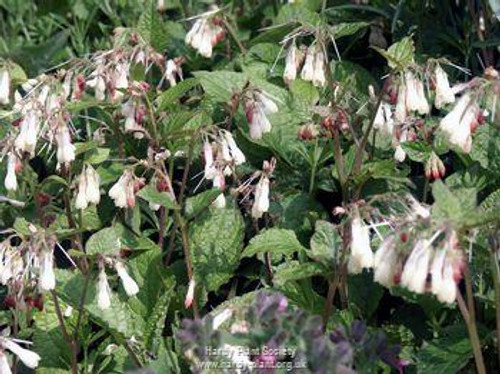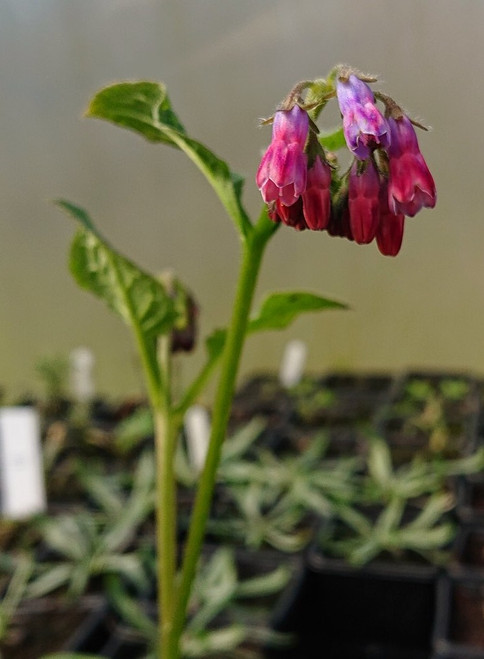Plant Overview
Our favourite comfrey. Striking dusky dark violet flowers from spring to early summer and then later in the year if cut back. The foliage tends to be a lighter green than most.
From Wales where a chance seedling was discovered growing.
Forms a good-sized clump but is non-invasive and doesn't spread in the way that some comfrey does. Good drought tolerance when established.
Excellent weed suppressor if planted en masse but also works well as a single plant in a border. Much loved by bees and other pollinators.
Height and spread: 60cm x 60cm
Symphytum:
As seen from the common names, Symphytum has long been used as a herbal cure, edible vegetable and animal fodder. It has also been used as a compost maker and plant food. An early use was in setting bones, the roots being ground to a paste and used in the way plaster of Paris is used today. The name comfrey comes from the Latin 'Conferre', meaning to bring together. Symphytum comes from the Greek 'Symphyo' - to make whole. All are useful for shady positions, although they will also grow in sun, preferring some moisture.
Common name(s): Comfrey, Knitbone, Boneset, Bruisewort, Pigweed.












